3,168cc OHV All-Alloy V8 Engine 2 Twin-choke Zenith Carburetors 150bhp at 5,000rpm 4-Speed ZF Manual Transmission Independent Front Suspension – Live Rear Axle 4-Wheel Hydraulic Aluminum Drum Brakes *Arguably the most collectible BMW to date, one of just 253 examples produced *Stunningly beautiful automotive design icon by Albrecht Graf Goertz *In present ownership for nearly 30 years *Eligible for the most prestigious events around the Globe THE BMW 507 During the 1950s, car designers on both sides of the Atlantic produced some of the all-time greats of automotive styling, none of them more classically beautiful than the sublime BMW 507. Indeed, a measure of the 507's iconic significance may be discerned from BMW's 're-introduction' of the model, after a gap of 40 years, in the form of the Z8 roadster. In an age when it has become de rigeur for heritage-conscious motor manufacturers to incorporate styling cues from landmark models into their latest offerings, few have ventured as far as BMW in paying homage to a recognized classic. Transatlantic in inspiration - aimed at the United States market, styled by a New York-domiciled German ex-patriot and built in Germany - the 507 reflected North American taste yet was unmistakably European in origin. The 507 saga began in 1954, when Austrian-born entrepreneur Max Hoffman, at that time the US importer of various European makes, convinced BMW that if they built a sports car to rival Mercedes-Benz's successful 300 SL, he could sell sufficient in the 'States to make the project viable. Hoffman knew just the man to style the car too: Count Albrecht von Goertz, an independent industrial designer who had worked for the legendary Raymond Loewy on the latter's trend-setting Studebakers. Designer of everything from fountain pens to furniture, Goertz had never before styled an entire car, and post-507 would not work for BMW again until the 1980s. The fundamental elements of BMW's proposed new sports car already existed in the 502 saloon, most notably its 3.2-liter, all-aluminum V8 engine, which was installed in a shortened chassis for the 507. Mechanical design was handled by BMW stalwarts Fritz Fiedler and Alex von Falkenhausen, with Goertz shuttling back and forth between the USA and Germany to oversee production of the full-size clay model. The robust nature of the 502-based chassis necessitated the use of aluminum for the 507's bodywork in the interest of weight saving, the finished car tipping the scales at around 1,280kg. With 150bhp on tap, performance was adequate if not stunning, production cars being capable of around 200km/h (125mph), with 100km/h (62mph) coming up in 11 seconds. For relaxed cruising though, the 507 had few peers, its state-of-the-art V8 engine delivering ample torque over a wide rev range. Although the prototype displayed at the 1955 Frankfurt Auto Show met with critical acclaim, the 507's reception at its New York debut two months earlier had been disappointing. BMW had missed Hoffman's $5,000 price target by a wide margin, the 507's initial US selling price being set at $9,000, more than double the cost of a Ford Thunderbird or Chevrolet Corvette. In the UK, one could buy two Jaguar XK150s for the price of a single 507. Even Mercedes-Benz's 300 SL Coupé was cheaper, though the Stuttgart firm was sufficiently impressed (worried?) by the 507 to introduce a direct competitor in the form of the 300 SL Roadster. Production proper of the 507 did not begin until 1956, the first series being built until June 1957 when the design was revised in detail. Improvements were mainly concentrated on the interior, which gained a deeper dashboard, a greater range of fore-and-aft seat adjustment, and a rear parcel shelf. There was, almost inevitably, an increase in price that only served to place the 507 even further beyond the reach of ordinary mortals. For those who could afford style at any price however, BMW's svelte roadster was the car to be seen in: pop idol Elvis Presley,
3,168cc OHV All-Alloy V8 Engine 2 Twin-choke Zenith Carburetors 150bhp at 5,000rpm 4-Speed ZF Manual Transmission Independent Front Suspension – Live Rear Axle 4-Wheel Hydraulic Aluminum Drum Brakes *Arguably the most collectible BMW to date, one of just 253 examples produced *Stunningly beautiful automotive design icon by Albrecht Graf Goertz *In present ownership for nearly 30 years *Eligible for the most prestigious events around the Globe THE BMW 507 During the 1950s, car designers on both sides of the Atlantic produced some of the all-time greats of automotive styling, none of them more classically beautiful than the sublime BMW 507. Indeed, a measure of the 507's iconic significance may be discerned from BMW's 're-introduction' of the model, after a gap of 40 years, in the form of the Z8 roadster. In an age when it has become de rigeur for heritage-conscious motor manufacturers to incorporate styling cues from landmark models into their latest offerings, few have ventured as far as BMW in paying homage to a recognized classic. Transatlantic in inspiration - aimed at the United States market, styled by a New York-domiciled German ex-patriot and built in Germany - the 507 reflected North American taste yet was unmistakably European in origin. The 507 saga began in 1954, when Austrian-born entrepreneur Max Hoffman, at that time the US importer of various European makes, convinced BMW that if they built a sports car to rival Mercedes-Benz's successful 300 SL, he could sell sufficient in the 'States to make the project viable. Hoffman knew just the man to style the car too: Count Albrecht von Goertz, an independent industrial designer who had worked for the legendary Raymond Loewy on the latter's trend-setting Studebakers. Designer of everything from fountain pens to furniture, Goertz had never before styled an entire car, and post-507 would not work for BMW again until the 1980s. The fundamental elements of BMW's proposed new sports car already existed in the 502 saloon, most notably its 3.2-liter, all-aluminum V8 engine, which was installed in a shortened chassis for the 507. Mechanical design was handled by BMW stalwarts Fritz Fiedler and Alex von Falkenhausen, with Goertz shuttling back and forth between the USA and Germany to oversee production of the full-size clay model. The robust nature of the 502-based chassis necessitated the use of aluminum for the 507's bodywork in the interest of weight saving, the finished car tipping the scales at around 1,280kg. With 150bhp on tap, performance was adequate if not stunning, production cars being capable of around 200km/h (125mph), with 100km/h (62mph) coming up in 11 seconds. For relaxed cruising though, the 507 had few peers, its state-of-the-art V8 engine delivering ample torque over a wide rev range. Although the prototype displayed at the 1955 Frankfurt Auto Show met with critical acclaim, the 507's reception at its New York debut two months earlier had been disappointing. BMW had missed Hoffman's $5,000 price target by a wide margin, the 507's initial US selling price being set at $9,000, more than double the cost of a Ford Thunderbird or Chevrolet Corvette. In the UK, one could buy two Jaguar XK150s for the price of a single 507. Even Mercedes-Benz's 300 SL Coupé was cheaper, though the Stuttgart firm was sufficiently impressed (worried?) by the 507 to introduce a direct competitor in the form of the 300 SL Roadster. Production proper of the 507 did not begin until 1956, the first series being built until June 1957 when the design was revised in detail. Improvements were mainly concentrated on the interior, which gained a deeper dashboard, a greater range of fore-and-aft seat adjustment, and a rear parcel shelf. There was, almost inevitably, an increase in price that only served to place the 507 even further beyond the reach of ordinary mortals. For those who could afford style at any price however, BMW's svelte roadster was the car to be seen in: pop idol Elvis Presley,
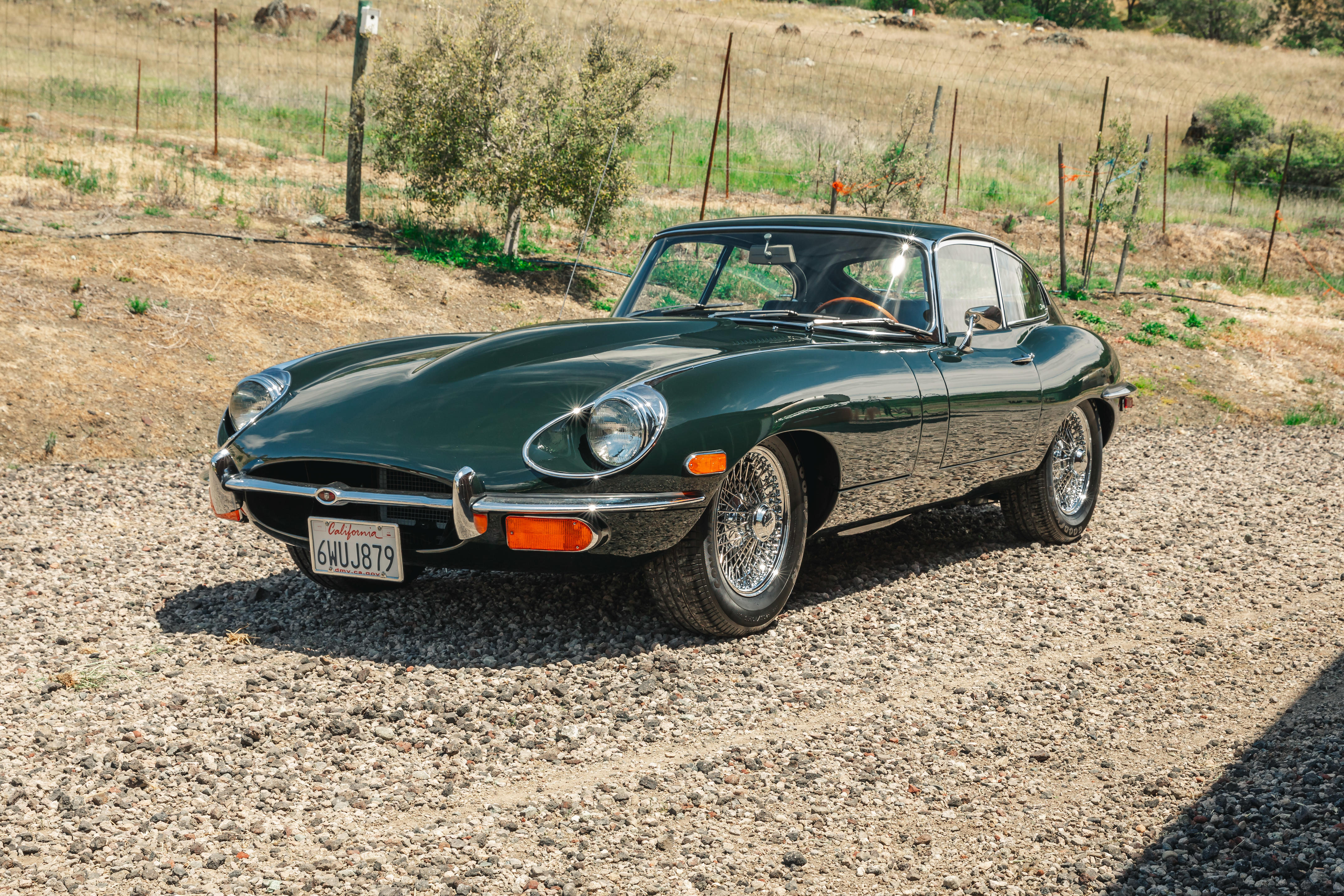
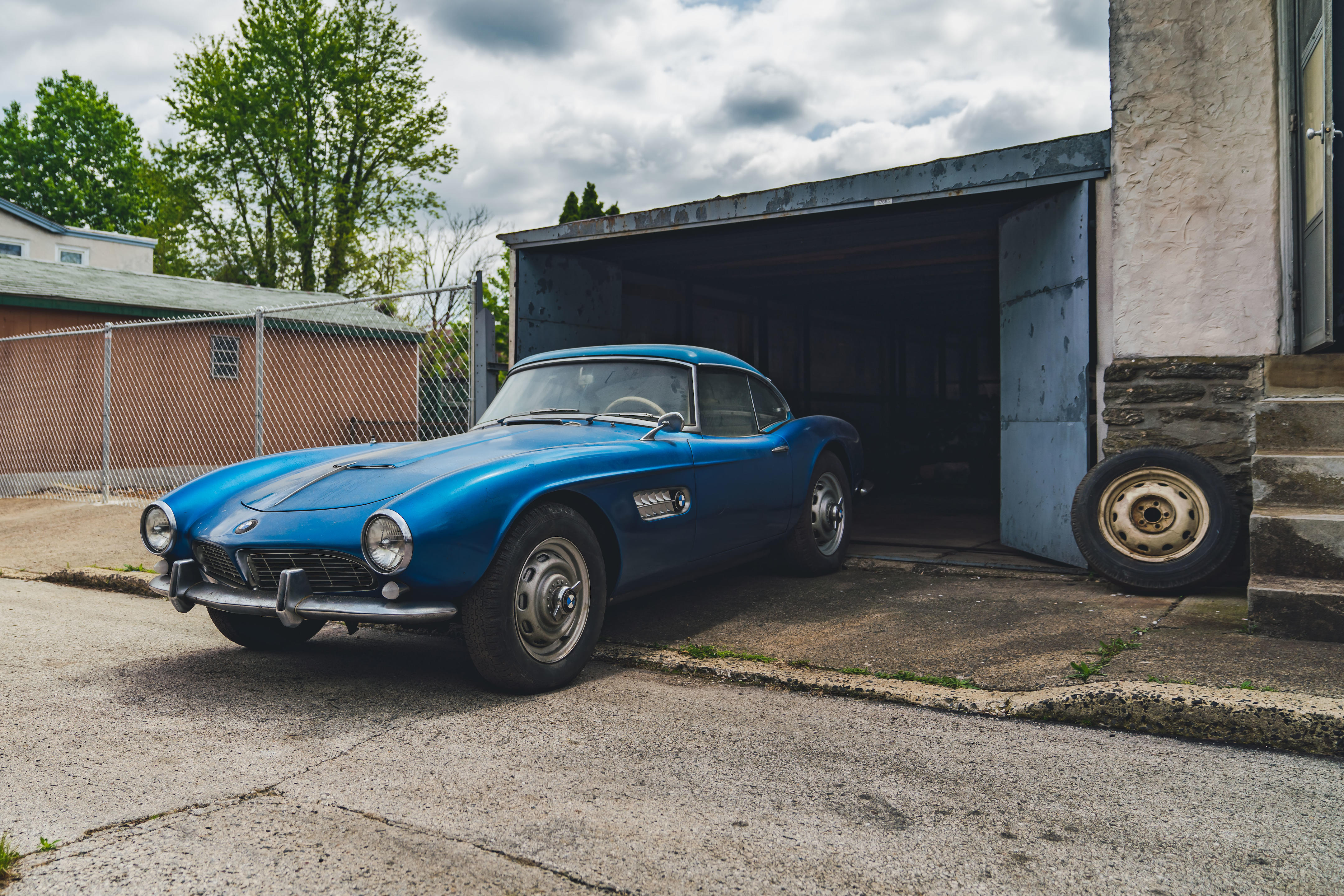

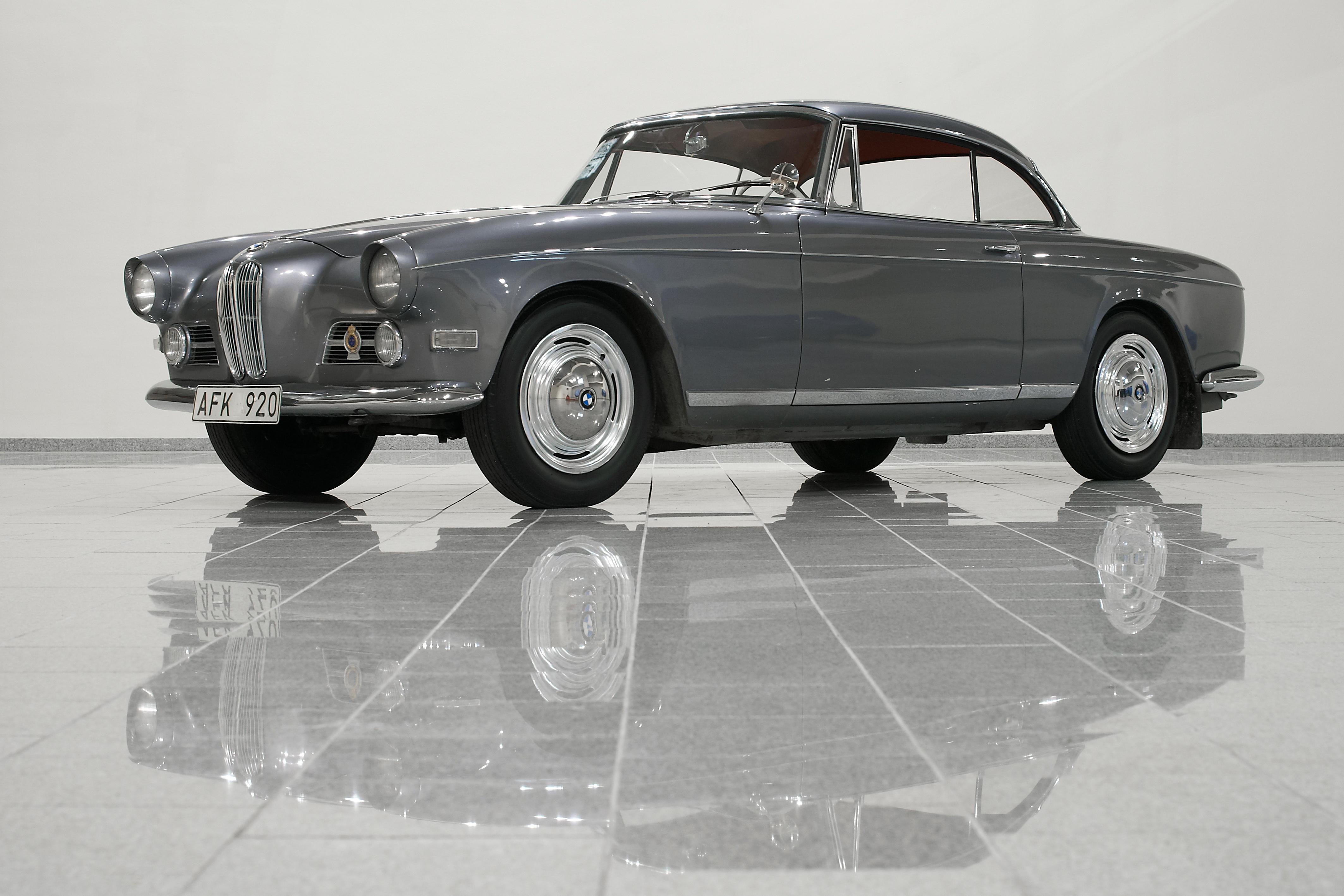


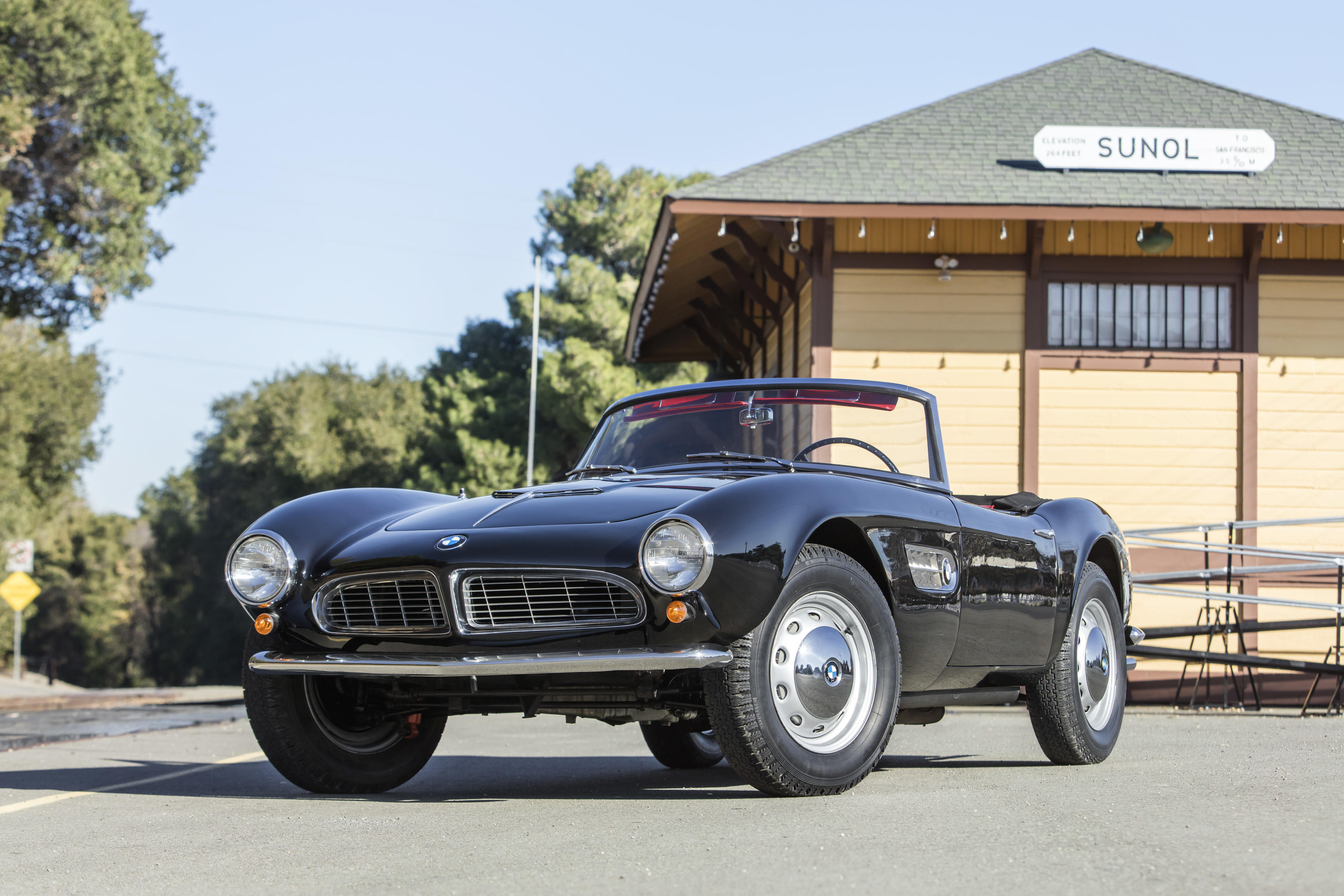

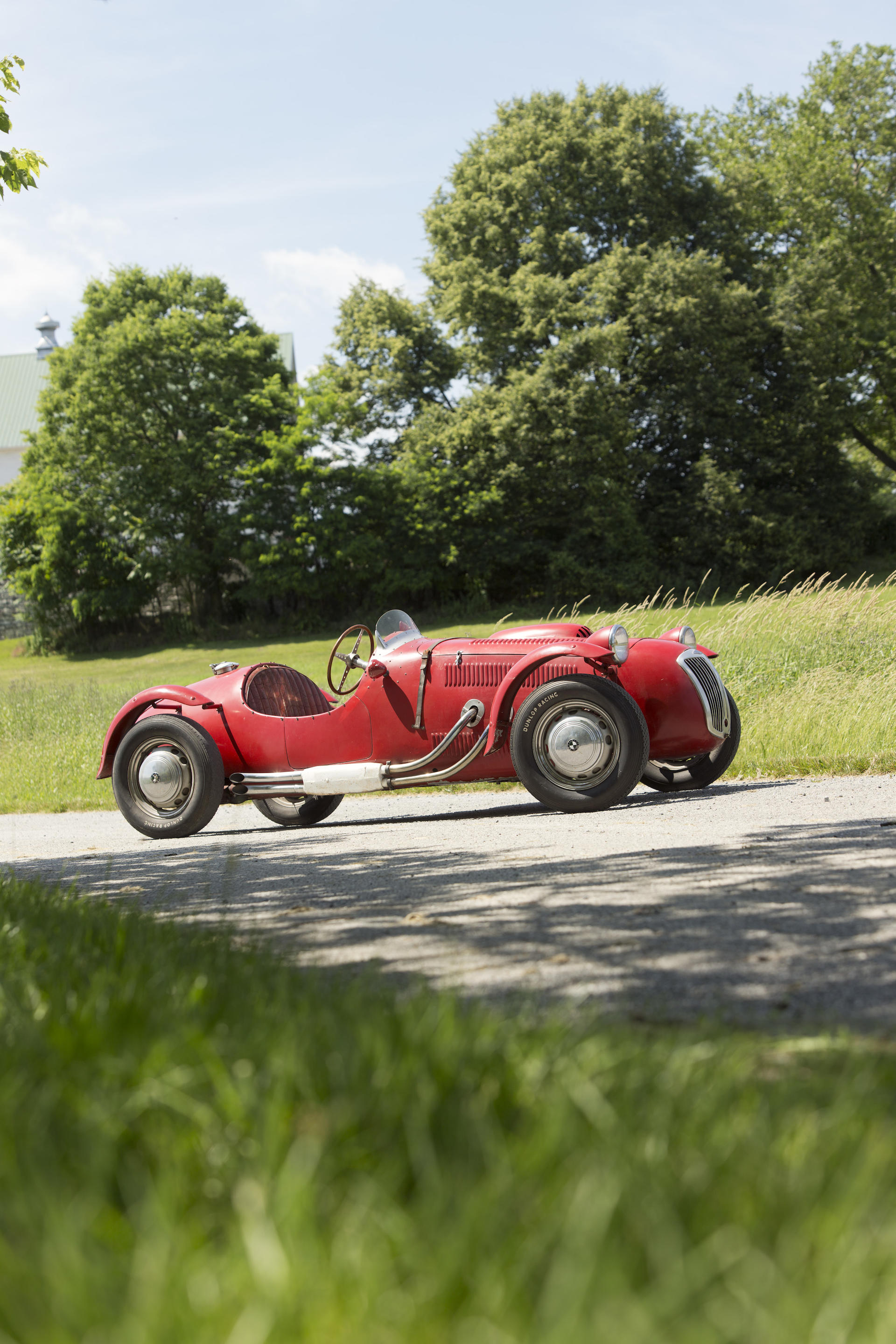

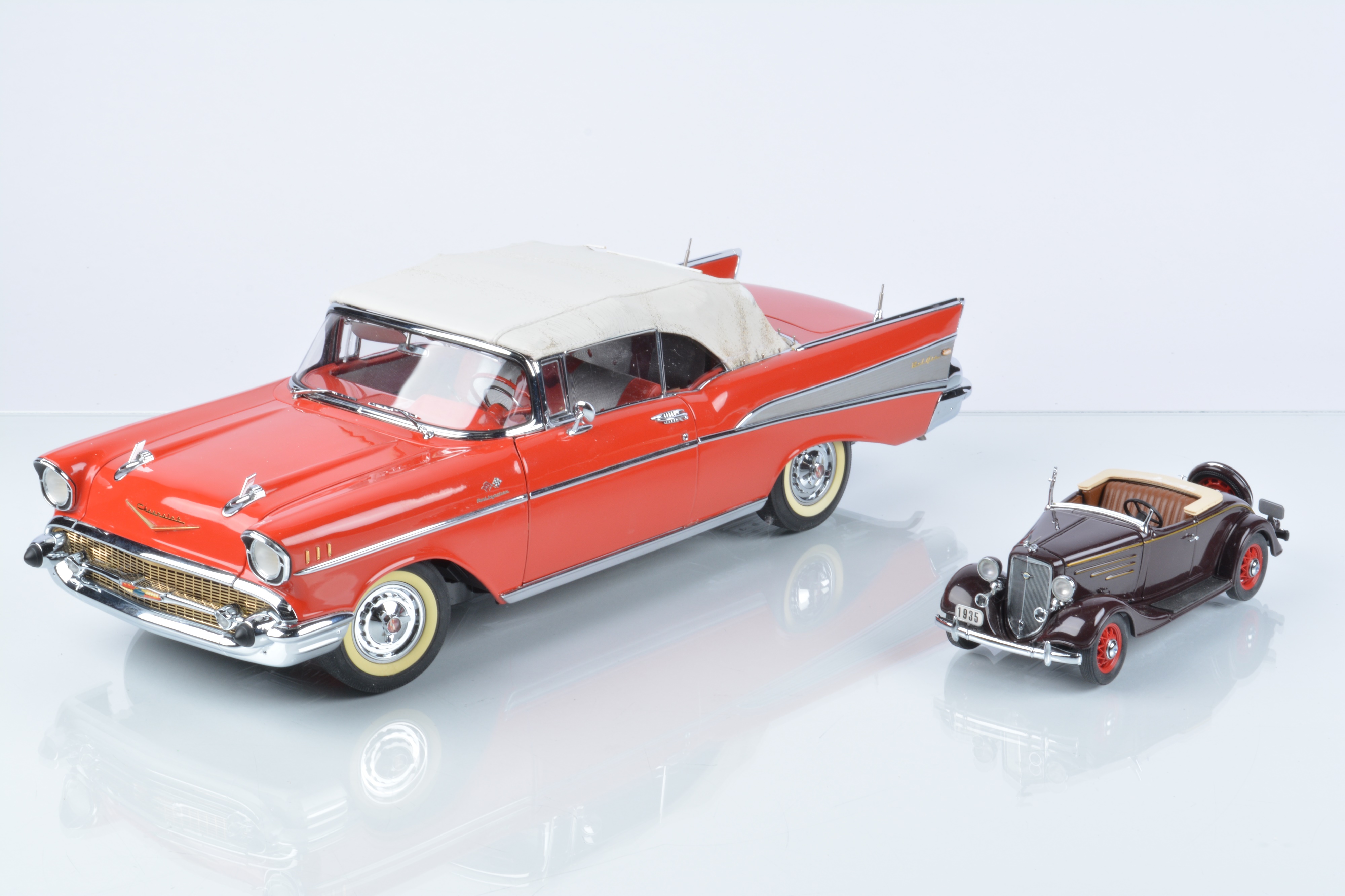
Testen Sie LotSearch und seine Premium-Features 7 Tage - ohne Kosten!
Lassen Sie sich automatisch über neue Objekte in kommenden Auktionen benachrichtigen.
Suchauftrag anlegen